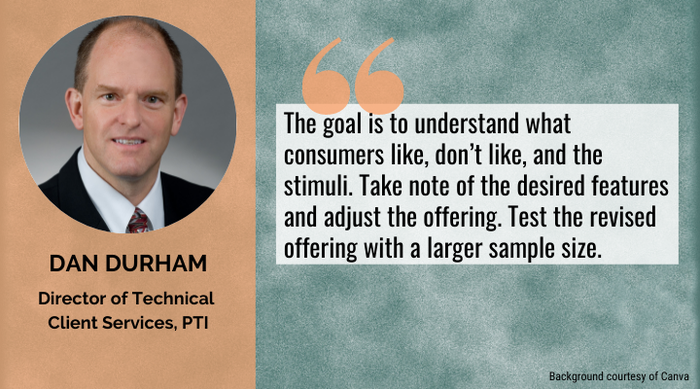Studying the data and results will enable brands to improve package designs, elevate consumer experience, and avoid costly production missteps.
March 29, 2022

The concept of “test and learn” is familiar to everyone. As children, it is how we find out about the world — what tastes good, what’s fun, what’s challenging, and what is comforting. We take risks (most often small ones) and are rewarded with knowledge about ourselves and our environment.
Sometimes, we get in over heads and learn some harsh lessons.
Consumer packaged goods companies are faced with the same risk/reward opportunities for their brands when launching new products, changing how they package a product, or changing the way they approach sustainability.
With supply chains working hard to keep up with current demands and competition in all market segments, brands are hesitant to change their systems and launch new products and packaging without sufficient data to back their move.
“Test and learn” allows brands to be reactive to their target consumers so that they bring finely tuned products and packages to the marketplace.

But how does this all come about? To be sure, it is a process. Let’s start with the test phase.
Select a small, well-chosen group of consumers. Generate ideas for improving the consumer experience. Create mock-ups with old and new features and produce functional samples of each. Present multiple options to your consumer group. Let them interact with the trial samples.
Next are the learnings. Ask your focus group questions about the features, their experience and their perception of value and sustainability.
The goal is to understand what consumers like, don’t like, and the stimuli. Take note of the desired features and adjust the offering. Test the revised offering with a larger sample size. Gather those results, adjustment the design, and prepare for a true market study.
Test and learn: how to start.
“Test and learn” starts with a small number of packages sampled for each variable to be trialed. One hundred to 1,000 consumers that meet the desired demographics are a good place to start. These samples can be generated in the lab and/or by prototyping specialists. No need to interrupt production. Subsequent rounds can grow beyond thousands to tens of thousands. This enables the brand to look at a wider market segment or consumer base or to simply reduce the “noise” in the data.
Sustainability goals bring more opportunities for “test and learn.” Every aspect of the package is an opportunity for sustainable improvements. For rigid plastic packaging, reducing the amount of material being used (especially virgin materials) is just the beginning. Label stock, inks, closures, and dispensing systems are all areas where brands can choose options that reduce environmental impact. Using recycled materials is just one option to obtain sustainability goals.
Designs that capture the brand aesthetic, but are optimized for manufacturing, can make utilizing post-consumer recycled (PCR) content easier. Even with improved designs, the appearance of packages containing PCR likely will be different from packages made from 100% virgin resin, especially as the percent of recycled content increases. For flexible packaging, moving to mono-materials films or films with recyclable barriers is a pathway to a more sustainable package.
“Test and learn” programs use real packages with real products reviewed by consumers to provide valuable feedback. By viewing the results, studying the data, improving their designs, brands elevate their package performance, enhance consumers’ experiences, and avoid costly missteps when going to full production runs.
Dan Durham is the director of technical client services at PTI. He has decades of experience in plastic packaging ranging from design to injection and blow molding processing. Durham is currently focused on helping multinational brand owners successfully navigate packaging projects from concept to commercialization and supporting their sustainability goals.
PTI is a worldwide source for preform and package design, package development, rapid prototyping, pre-production prototyping, and material evaluation engineering for the plastic packaging industry.
About the Author(s)
You May Also Like




